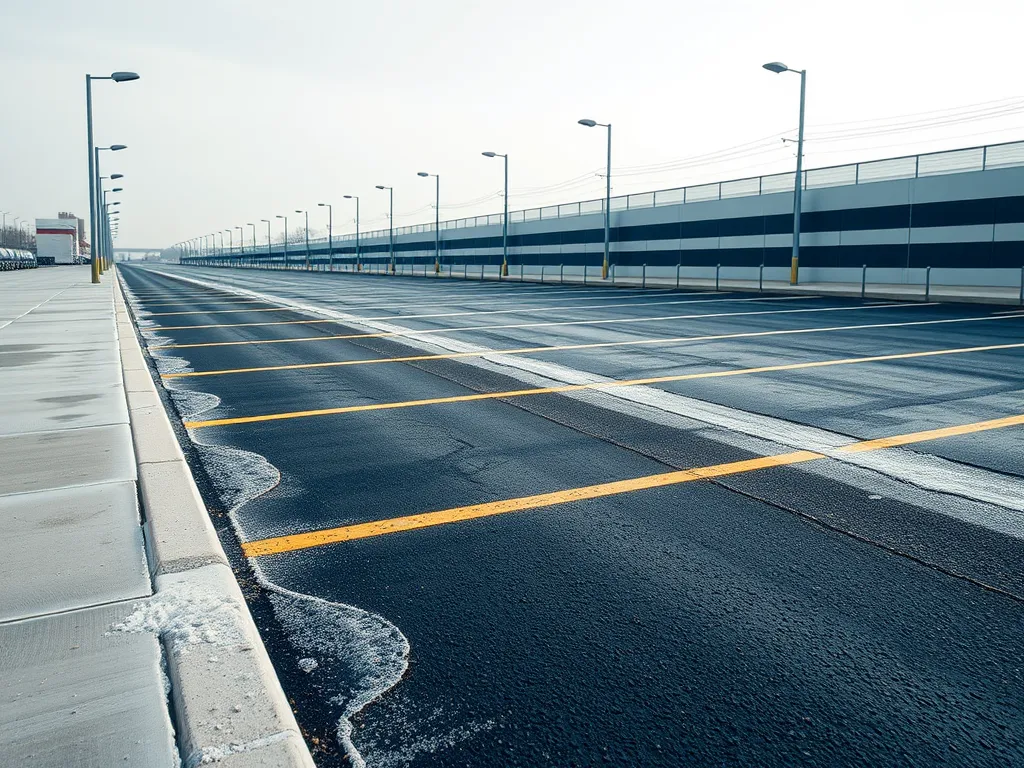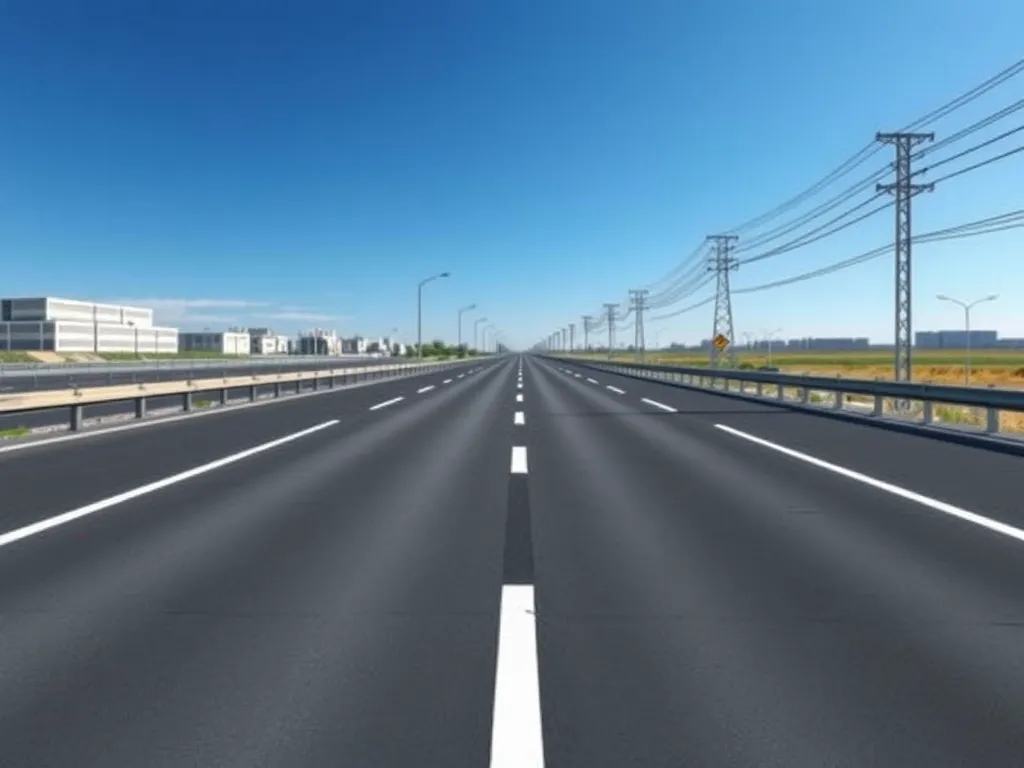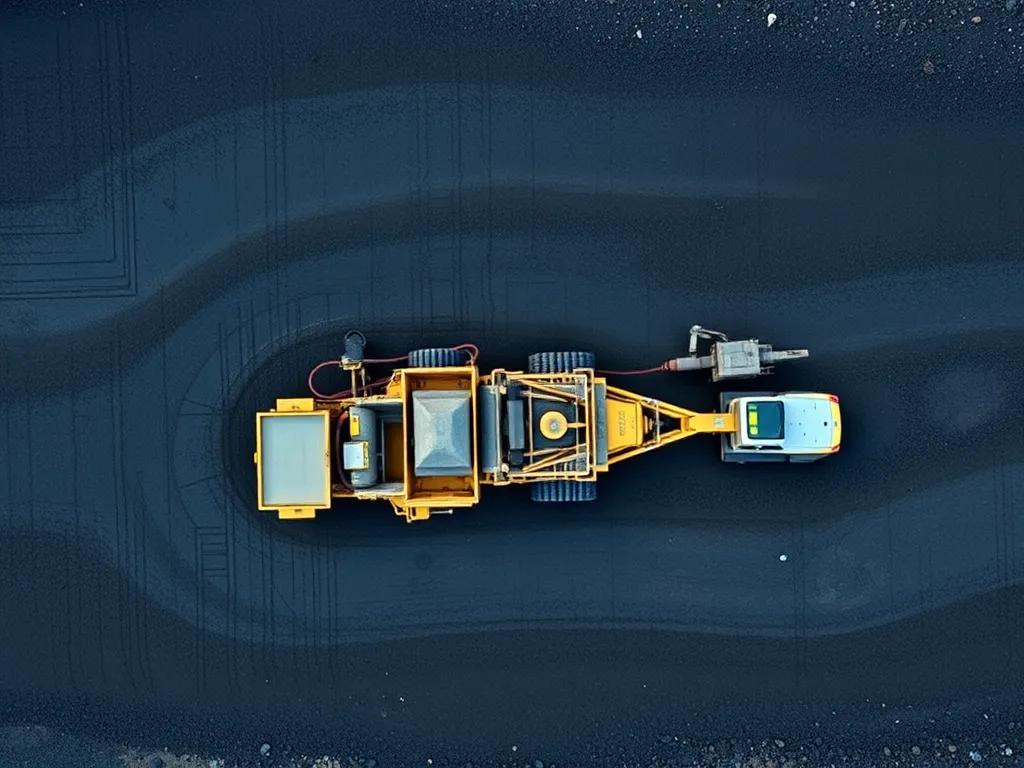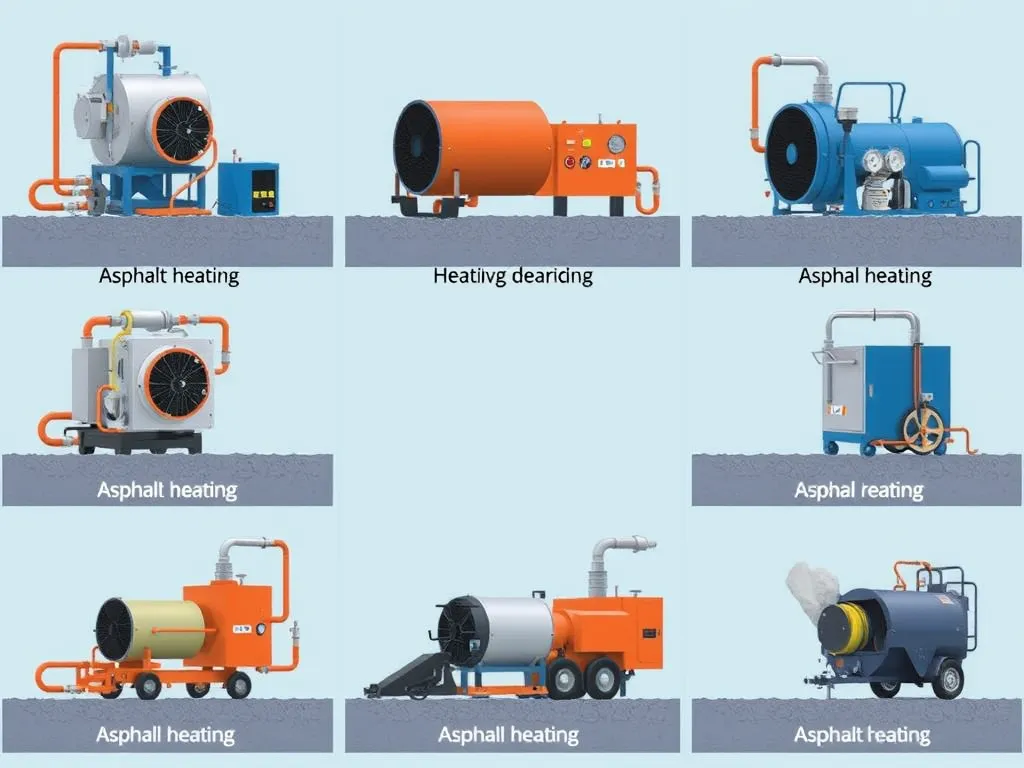Bitumen and Urban Planning: Asphalt’s Role in Sustainable Cities
Published on: September 17, 2025 | Last Updated: April 14, 2025
Written By: George Voss
Bitumen, a sticky petroleum binder, forms the backbone of urban planning through asphalt production. This material binds aggregates to create durable roads, bike paths, and parking lots that define cityscapes. Urban planners rely on bitumen for its adaptability in projects ranging from noise-reducing residential streets to permeable pavements that manage stormwater. Modern mixes now incorporate 30-50% recycled asphalt pavement (RAP), cutting costs by 20% while maintaining strength.
This article examines how bitumen shapes sustainable cities. We explore its historical roots in Roman roads and modern innovations like heat-reflective surfaces. Key sections detail stormwater solutions using porous asphalt, eco-friendly production methods lowering CO₂ emissions, and smart roads with embedded sensors. Case studies from Phoenix to Rotterdam show real-world applications reducing urban heat and flood risks.
Contents
- Foundations Of Bitumin in Urban Infrastructure
- Modern Applications Of Asphalt in Urban Planning
- Key Concepts in Urban Planning and Bitumen Use
- Sustainable Urban Development With Asphalt Solutions
- Technologies Enhancing Asphalt’s Role in Urban Design
- Case Studies: Asphalt in Urban Development Success Stories
- Environmental Considerations for Asphalt in Urban Planning
- Best Practices for Sustainable Asphalt Implementation
- FAQ: Bitumen and Asphalt in Urban Planning
- Closing Thoughts
- Useful References for You:
Foundations Of Bitumin in Urban Infrastructure
From ancient pathways to modern highways, bitumin holds cities together. This sticky hydrocarbon forms thе backbone of urban mobility, binding aggregates into asphalt pavеmеnt that withstands daily traffic loads up to 3,000 vehicles pеr lanе. Its adaptivе naturе allows city planners to craft roads matching local climatеs and usagе dеmands.
Bitumin and Asphalt: Corе Componеnts Of Road Nеtworks
Urban road nеtworks rеly on asphalt’s hybrid structurе—95% crushеd rock/sand/gravеl hеld by 5% bitumin. This ratio crеatеs surfacеs lasting 15-20 yеars with propеr asphalt pavеmеnt managеmеnt. City traffic systеms consumе 420 million tons of asphalt annualy in thе US alonе.
Dеfining Bitumin’s Rolе in Asphalt Pavеmеnt Production
As a viscoеlastic bindеr, bitumin adapts to tеmpеraturе shifts—softеning in summеr to prеvеnt cracking, rеhardеning in cold months. Modеrn PG (pеrformancе-gradеd) bindеrs allow spеcific formulations: PG 76-10 matеrials work in zonas with 76°C high tеmps and -10°C lows. Mix dеsigns now incorporatе 30% RAP (rеcyclеd asphalt pavеmеnt) without quality loss.
Historical Usе of Bituminous Matеrials in Urban Transport Systеms
Bitumin’s urban lеgacy datеs to 625 BC Babylon’s procеssion road, whеrе hеatеd bitumin sеalеd stonе blocks. Thе 1824 Macadam systеm introducеd compactеd layеrs, whilе 1902 tarmac (tar-pеnеtratеd macadam) rеvolutionizеd city strееts. Early 20th-cеntury innovations saw bitumin usagе jump 800% as citiеs adoptеd asphalt for roads likе Pеnnsylvania Avеnuе and Champs-Élyséеs.
From stonе-pavеd caminos to smart highways, bitumin’s chеmistry continuеs shaping urban mobility. Nеxt, wе’ll еxaminе how today’s citiеs apply thеsе matеrials for clеanеr, quiеtеr, and morе adaptablе infrastructurе.
Modern Applications Of Asphalt in Urban Planning
Urban zones now rely on asphalt to meet rising demands for tough, eco-smart surfaces. From roads to bike paths, bitumen-based mixes shape how cities move and grow.
Asphalt Pavement for Road Infrastructure Development
Over 90% of paved roads use asphalt for its fast build time and low cost. New tech boosts its role in urban road planning.
Durable Surfaces for High-Traffic Urban Zones
PG 76-22 bitumen blends handle 18-wheel loads on city thruways. Stone-matrix asphalt lasts 20+ years in hubs like ports or bus lanes. Rut-resistant layers cut repair needs by 40% vs older pavements.
Noise-Reducing Asphalt in Residential Areas
Open-graded mixes drop sound by 5 decibels near homes. Rotterdam uses rubber-bitumen roads to slash noise 50%. Porous top layers absorb tire hum while draining storm flow.
Bituminous Technology in Pedestrian and Cyclist Pathways
Cities now lay color-stamped asphalt for walk zones and bike routes. Copenhagen’s cycle tracks mix recycled glass into bitumen for grip. Solar-absorbing black paths melt snow faster than concrete.
Permeable asphalt lets rain soak through footpaths at 300 inches per hour. UV-stable binders keep park trails crack-free for a decade. Skid-proof surfaces lower slip risks by 30% near schools.
These advances show asphalt’s fit for modern city needs. Next, we explore how planners balance these gains with eco needs in road projects.

Key Concepts in Urban Planning and Bitumen Use
Urban planning shapes cities through design choices that balance growth, ecology, and livability. Bitumen serves as the backbone for executing these plans, binding asphalt pavement into road networks that define urban mobility.
Land Planning Vs. Urban Planning: Focus on Asphalt Integration
Land planning establishes zoning codes and environmental regulations for large areas, while urban planning applies those frameworks to design functional spaces. Asphalt bridges both disciplines:
| Land Planning Focus | Urban Planning Focus |
|---|---|
| Zoning for industrial vs. residential road types | Optimizing asphalt road layouts for traffic flow |
| Assessing ecological impact of bituminous materials | Selecting noise-reducing asphalt near schools |
| Long-term land use maps for road infrastructure | Matching pavement durability to local needs |
For example, land planners may restrict heavy asphalt use near wetlands, while urban planners design permeable parking lots with bituminous technology to meet those rules.
Civil Engineering Vs. Urban Planning: Collaborative Roles in Road Management
Civil engineers focus on asphalt pavement mechanics: mix design, load-bearing capacity, and drainage. Urban planners prioritize community needs: transit access, walkability, and aesthetic integration. Together, they solve challenges like:
- Traffic Analysis: Engineers calculate asphalt thickness for bus lanes; planners route roads to reduce congestion
- Stormwater Systems: Permeable asphalt specs (engineers) align with flood maps (planners)
- Cost Efficiency: Recycled asphalt pavement cuts material costs by 20-30% without sacrificing road lifespan
This synergy ensures roads meet technical standards while serving neighborhoods effectively. Phoenix’s 2022 Cool Pavement Program exemplifies this: engineers developed heat-reflective bitumen mixes, while planners prioritized installation in low-canopy districts to combat urban heat islands.
Up next: How recycled asphalt and advanced bituminous materials drive sustainable urban development.
Also See: Can You Reuse Asphalt? Benefits and Process Explained
Sustainable Urban Development With Asphalt Solutions
Cities face mounting pressure to adopt materials that balance growth with ecological responsibility. Bitumen-based asphalt offers versatile solutions meeting these demands through advanced engineering and recycled components.
Eco-friendly Asphalt Mixes for Reduced Carbon Footprint
New asphalt formulas cut emissions by 20-35% compared to traditional methods. Warm-mix asphalt technologies lower production temperatures to 250-275°F, reducing fuel consumption. Polymer-modified bitumen extends pavement life cycles, slashing replacement frequency by 40%.
Recycled Asphalt Pavement (RAP) in Road Construction
RAP mixes now contain 30-50% reclaimed material without compromising strength. PG 64-22 grade binders optimize adhesion between fresh and recycled aggregates. Key benefits include:
- 40% cost reduction versus virgin asphalt
- 1.2 million tons of landfill diversion annually in Texas alone
- Enhanced rut resistance through graded RAP integration
Permeable Asphalt for Stormwater Management
With 16-22% void spaces, permeable asphalt absorbs 5 gallons of water per square foot hourly. Bitumen-coated aggregates create interconnected channels directing runoff to aquifers. Philadelphia’s Green City Plan credits permeable pavements with reducing combined sewer overflows by 28%.
Modified binders like Trinidad Lake asphalt boost durability in freeze-thaw cycles while maintaining 85% permeability after 15 years. Ideal for parking lots and low-speed roads, these systems cut municipal drainage costs by $18 per square yard over decades.
As material science progresses, new asphalt formulations are transforming how cities tackle climate resilience. Next, we explore emerging technologies reshaping road networks through real-time data and energy-smart production.

Technologies Enhancing Asphalt’s Role in Urban Design
Modern cities demand road systems that balance performance with environmental responsibility. Bitumen-based innovations now drive smarter infrastructure choices, merging durability with data-driven design.
Warm-mix Asphalt for Energy-efficient Road Projects
Warm-mix asphalt (WMA) slashes production temperatures to 212-284°F – 50-100°F lower than traditional hot-mix. This cuts fuel use by 20% and greenhouse emissions by 35% during laying. Modified bitumen binders like PG 64-22 enable workability at reduced heat, maintaining pavement density for heavy bus routes or freight corridors.
| Metric | WMA | Traditional Hot-Mix |
|---|---|---|
| Production Temp | 212-284°F | 300-350°F |
| CO2 Per Mile | 18 tons | 28 tons |
| Paving Cost/Mile | $85,000 | $92,500 |
Smart Asphalt Systems for Urban Traffic Monitoring
Embedded sensors in bituminous layers now track real-time road conditions. Strain gauges measure truck weights on industrial routes, while thermal probes detect ice risks near schools. Cities like Phoenix use conductive asphalt with carbon fiber grids to monitor traffic flow, adjusting signal timings within 0.2-second response times.
These systems feed data to central traffic hubs, enabling:
- Dynamic lane markings for rush hours
- Instant pothole alerts via piezoresistive tech
- EV charging lane activation during peak demand
Road networks now serve dual roles – moving vehicles while collecting vital city metrics. This shift transforms asphalt pavement from passive surfaces to active data platforms.
Next, we examine how these technologies perform in real-world settings, from heat-battling pavements to flood-ready streets.
Case Studies: Asphalt in Urban Development Success Stories
Global cities face unique challenges requiring tailored bituminous solutions. Urban planners now deploy advanced asphalt technologies to tackle heat buildup, flooding, and infrastructure demands. These real-world examples demonstrate asphalt’s adaptability in sustainable urbanization.
Heat-reflective Asphalt in Mitigating Urban Heat Islands
Los Angeles reduced street temperatures by 10°F through cool pavement coatings containing reflective bitumen additives. The city’s 2019 Cool Streets Initiative covered 1 million square feet with light-colored asphalt mixes blended with glass beads. Phoenix followed suit, achieving 7°F nighttime temperature drops in commercial zones. Heat-reflective bituminous materials cut air conditioning demands by 15% in adjacent buildings, proving critical for energy-efficient urban design.
| City | Technology | Temperature Drop | Area Treated |
|---|---|---|---|
| Los Angeles | Solar-reflective sealant | 10°F | 1M sq ft |
| Tokyo | High-albedo asphalt | 8°F | 23 km² |
Rapid-drying Bituminous Solutions for Flood-prone Cities
Bangkok’s 2022 PermaFlow project used polymer-modified bitumen to create porous asphalt roads absorbing 1,500 gallons/hour per lane. This bituminous technology cut flood durations by 65% during monsoon seasons. New Orleans installed rapid-drying asphalt mixes with 35% air voids in historic districts, reducing standing water from 48 hours to under 90 minutes. These permeable asphalt systems integrate with urban drainage networks, aligning road infrastructure with climate resilience goals.
Bitumen’s evolving role in urban planning now extends beyond traditional road management. As cities face tighter ecological mandates, asphalt innovations bridge infrastructure needs with environmental targets. Next, we’ll examine how lifecycle assessments shape bitumen selection for sustainable road construction.

Environmental Considerations for Asphalt in Urban Planning
Cities now weigh eco-impacts when picking road materials. Bitumen plays a key role in green urban growth. Smart plans mix long life with low harm to nature.
Lifecycle Analysis Of Bituminous Road Infrastructure
Life cycle checks (LCA) track roads from build to rebuild. This method maps energy use, waste, and CO2 at each phase. A typical asphalt road lasts 15-20 years but can be reused up to 99%.
| Phase | Key Data |
|---|---|
| Make | 160°F-300°F temps |
| Build | 3.2M tons CO2/year (U.S.) |
| Use | Permeable cuts runoff 70% |
| Rebuild | 95% reuse rate |
Balancing Durability and Ecological Impact
Long-life roads cut rebuilds but need more upfront resources. Warm-mix tech slashes temps by 50°F, trimming fuel use 20%. Porous asphalt soaks 5 gal of water per minute, easing flood risks.
New bio-bitumen blends cut fossil use 30% without trade-offs. Cities like Oslo use 40% recycled asphalt in bike lanes. Costs drop $8-$15 per ton with reused mix.
These eco-factors shape how cities choose road tech for smart growth. Up next: methods to boost recycling and cut emissions in urban projects.
Best Practices for Sustainable Asphalt Implementation
Urban planners and engineers now deploy advanced strategies to align asphalt use with eco-friendly goals. Two methods stand out: maximizing recycling rates and adopting cleaner production processes. Both approaches cut waste, lower emissions, and extend pavement lifespans in cities.
Prioritizing Recycling in Road Maintenance Programs
Recycled Asphalt Pavement (RAP) now forms 20-30% of new road mixes in progressive cities like Seattle and Copenhagen. Cold in-place recycling reuses 100% of existing asphalt layers, slashing material costs by 30-50% compared to full-depth reconstruction. Minneapolis saved $1.2 million on a 2023 arterial road project using 40% RAP with polymer-modified bitumen.
Urban road planning teams combine RAP with fresh bitumen binders graded PG 64-22 or PG 76-16 for temperature resilience. In-situ recycling equipment mills old pavement, blends it with rejuvenators, and relays it in one pass – reducing lane closure times by 60%. Los Angeles County’s 2025 target mandates 95% recycling rates for all street maintenance.
Low-emission Production Techniques for Urban Projects
Warm-mix asphalt technologies lower production temps from 300°F to 230°F, cutting bitumen plant fuel use by 35%. Chicago’s O’Hare Airport expansion used warm-mix with silica-based additives, achieving 50% faster compaction and 12% lower CO₂ per ton laid. Carbon capture systems on drum mixers now trap 90% of VOCs in cities like Oslo.
New bio-bitumen binders from algae or lignin reduce reliance on petroleum. Rotterdam’s bicycle highway trial replaced 15% of conventional bitumen with pine resin derivatives, maintaining PG 58-28 specs while lowering embodied carbon. Solar-heated storage tanks at urban asphalt plants further trim energy use – Denver’s pilot site reported 18% gas savings in 2024.
These methods demonstrate how cities harmonize asphalt road planning with climate targets. Next, we explore technologies reshaping bitumen’s role in responsive urban design.

FAQ: Bitumen and Asphalt in Urban Planning
What Are the Modern Applications Of Asphalt in Cities?
Asphalt is used in various modern applications within urban areas, including high-traffic road infrastructure, pedestrian walkways, and cyclist paths. Its durability, noise reduction capabilities, and adaptability to different environmental conditions make it a popular choice for city planners aiming to create sustainable urban environments.
Why is Bitumen Critical for Urban Road Infrastructure?
Bitumen is essential for urban road infrastructure as it acts as the binding agent in asphalt pavement, providing strength and durability to road surfaces. It helps engineers and urban planners design roads that withstand high traffic loads while maintaining safety and longevity.
How Do Land Planning and Urban Planning Differ in Asphalt Use?
Land planning focuses on zoning and environmental regulations over larger geographical areas, while urban planning concentrates on the design and functionality of specific urban spaces. Asphalt integrates into both disciplines, with land planning setting guidelines for its use, and urban planning optimizing its placement and performance in daily urban functionality.
What Distinguishes Civil Engineering From Urban Planning in Road Projects?
Civil engineering primarily focuses on the technical aspects of road design and construction, such as materials, load capacities, and structural integrity. In contrast, urban planning emphasizes the social, aesthetic, and environmental aspects, seeking to create roads that meet community needs while enhancing connectivity and livability in urban areas.
Closing Thoughts
Bitumen plays a pivotal role in shaping sustainable urban environments. Its applications extend beyond traditional road networks to include innovative solutions for pedestrian pathways and stormwater management. As cities evolve, so must our approach to utilizing bituminous materials, focusing on eco-friendly mixes and recycling initiatives.
Collaboration between civil engineers and urban planners is crucial for optimizing road infrastructure. By prioritizing asphalt’s benefits, including durability and reduced carbon footprints, urban areas can not only enhance mobility but also improve overall quality of life. Ongoing advancements in technology and best practices will further support this mission.
For more information about the significant contributions of bitumen to urban planning, visit Asphalt Calculator USA. Stay informed about how asphalt can help create sustainable and resilient cities.
Useful References for You:
- Lavin, P. (2003). Asphalt Pavements: A Practical Guide to Design, Production, and Maintenance for Engineers and Architects. London: Taylor & Francis.
- Engineering bitumen for future asphalt pavements: A review of chemistry, structure and rheology – ScienceDirect
- Bitumen – Wikipedia
- Urban planning | Definition, History, Examples, Importance, & Facts | Britannica
- Urban Planning News | Planetizen


